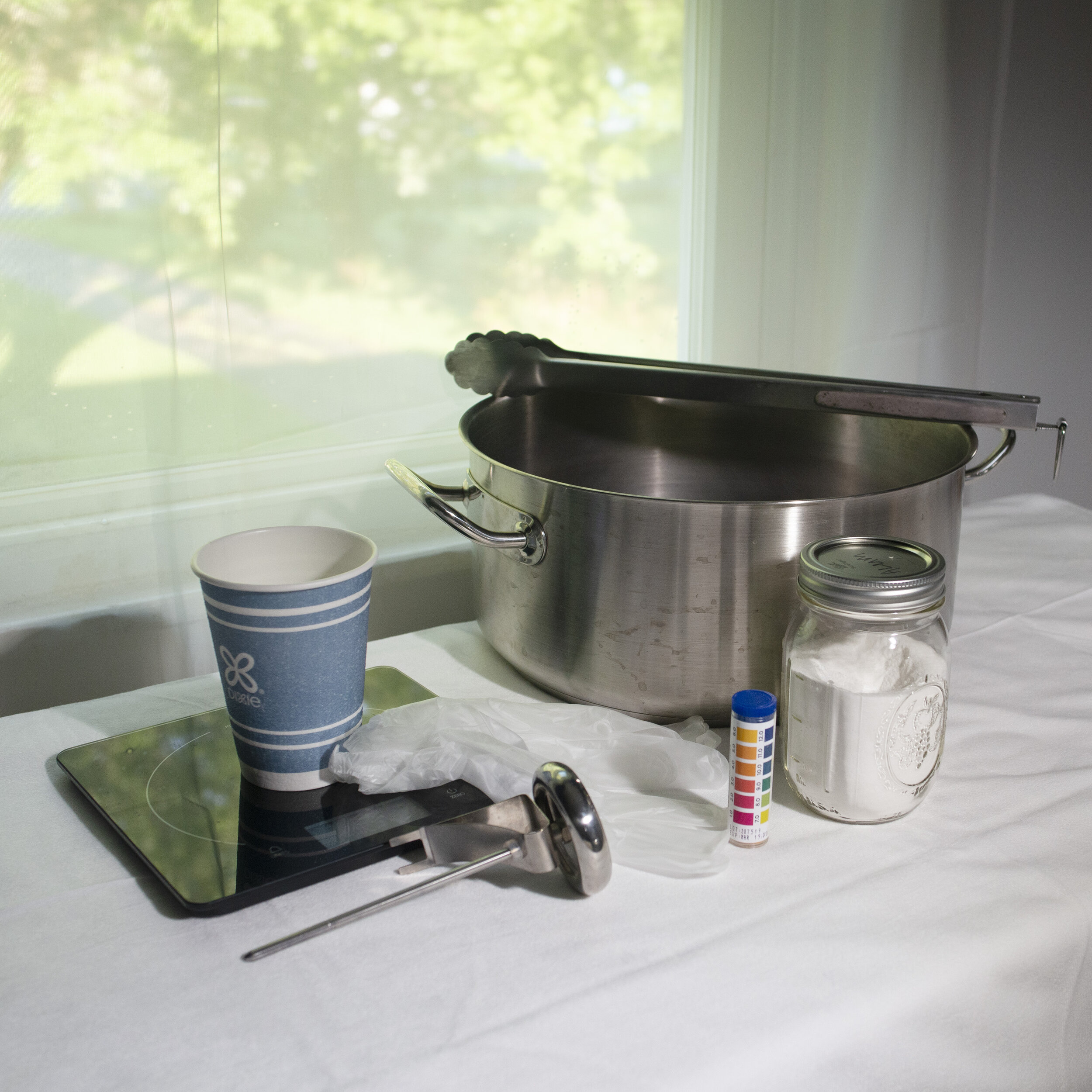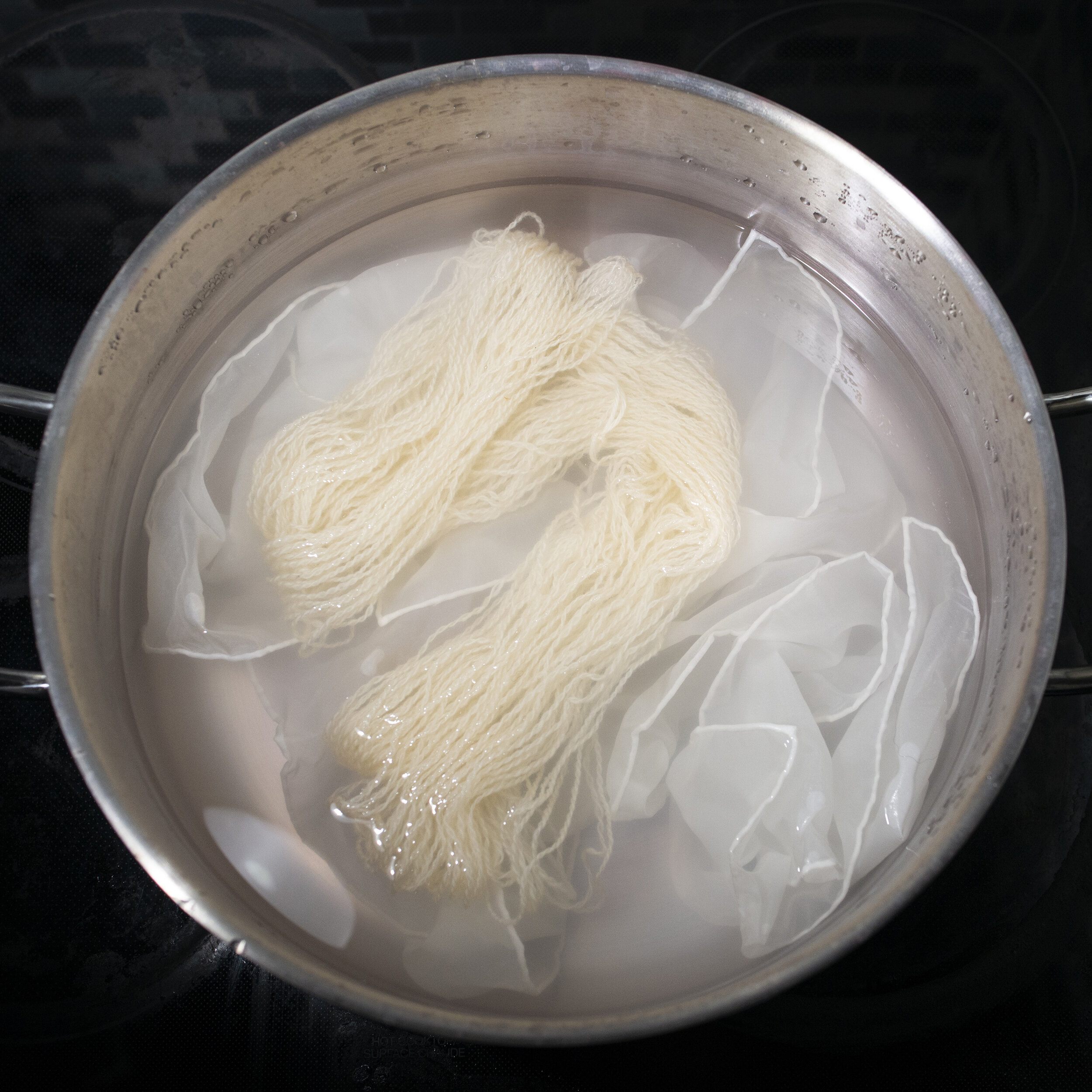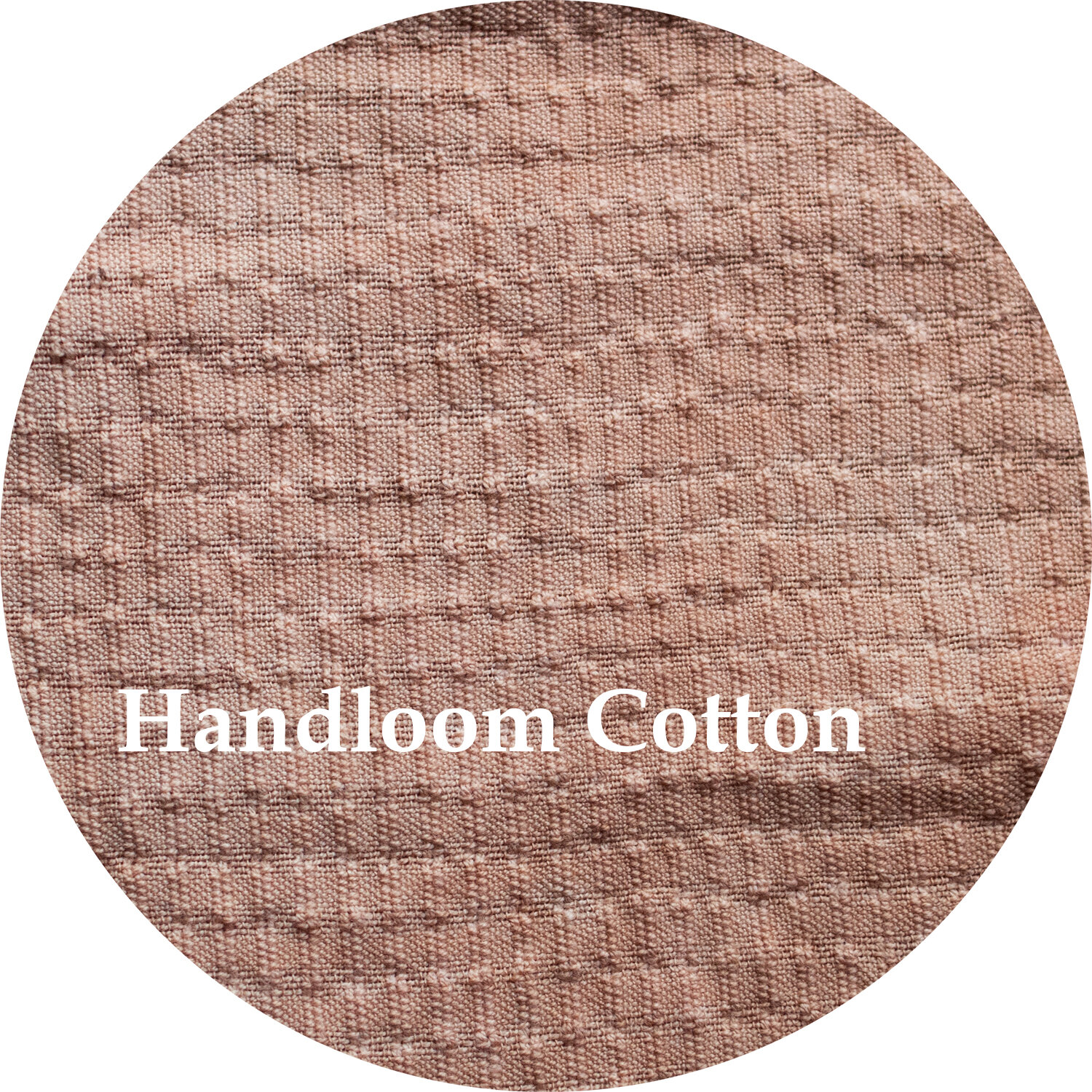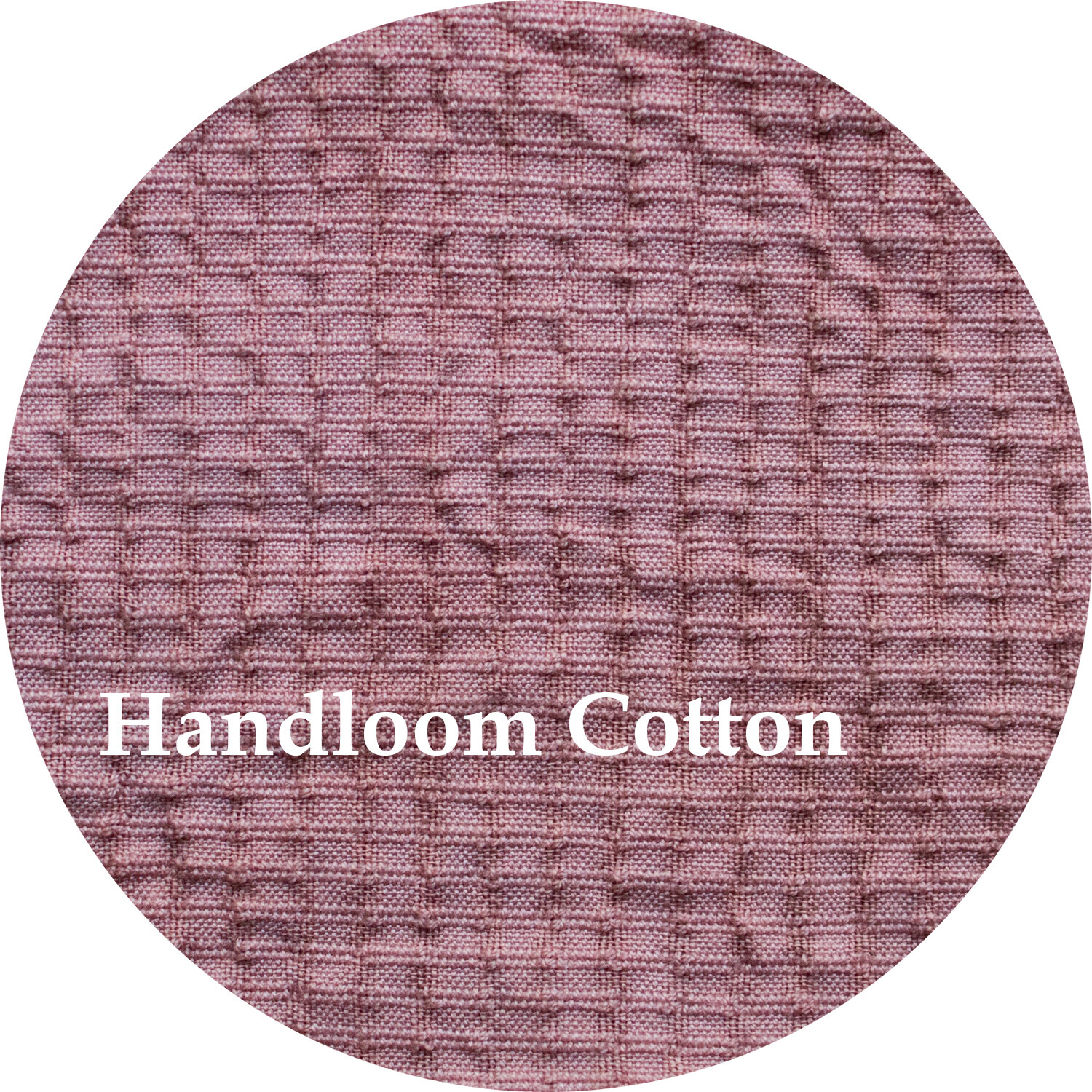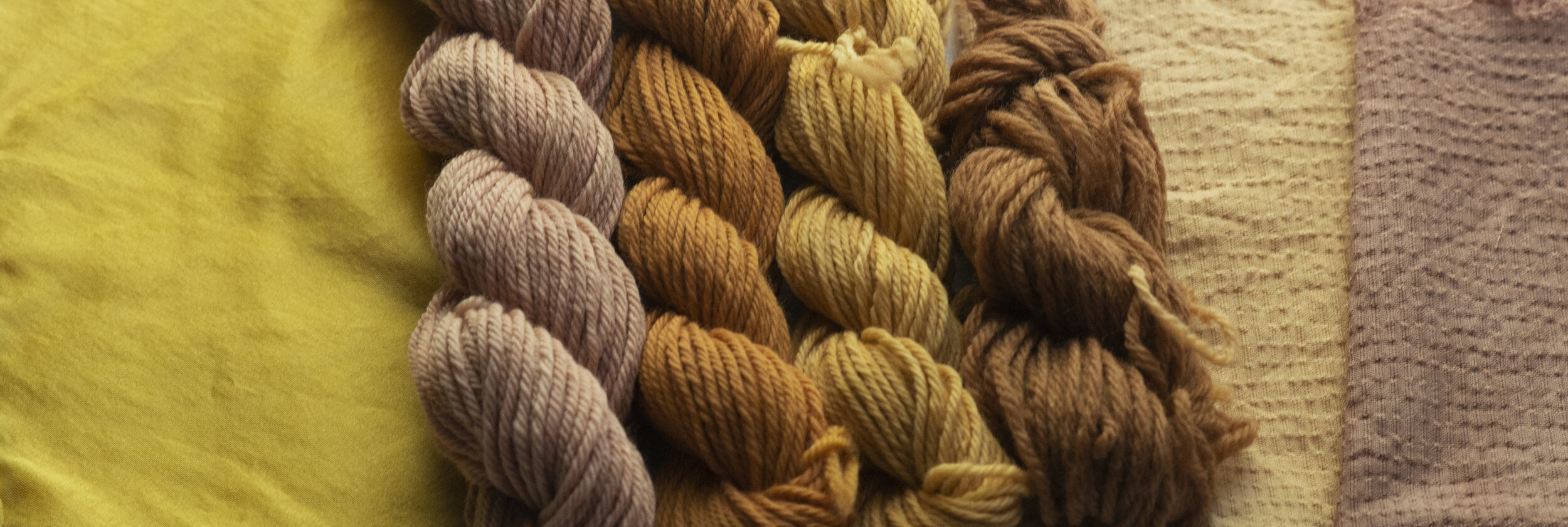
Himalayan Rhubarb Extract
A Guide to Himalayan Rhubarb Extract
Shepherd Textiles Himalayan Rhubarb Extract is made from the roots of rheum emodi, a species of rhubarb native to the mountainous regions of northern India and Nepal. It gives a rich, color-fast golden yellow, which can be shifted to brick red with soda ash. Our extract is imported direct from northern India, and requires only about 5% weight-of-fabric (WOF) for strong colors on mordanted fiber. Product of India. Produced by a GOTS (Global Organic Textile Standard) certified manufacturer.
1. Background on Himalayan Rhubarb
The Himalayan Rhubarb, rheum emodi (also known as rheum australe) is native to the mountainous regions of Nepal, Bhutan, and northern India. It is related to the common garden rhubarb, rheum x hybridum, although distantly. Himalayan Rhubarb grows on rocky slopes at altitudes of between 10,500 and 17,000 feet (Rokaya et al. 2012:762). It is cultivated as a medicinal herb, and the roots are generally not harvested until the plant is 4 or 5 years old, when its chemical compounds will be most concentrated.
Different Himalayan cultures use the plant for different purposes, including treating cramps, back pain, kidney disorders, bronchitis, ear aches, or even just as an aperitif to stimulate the appetite (ibid:764-768). The roots of Himalayan Rhubarb have a complex chemistry and they produce a number of powerful anthraquinones and flavonols. For dyers, the most significant of the root’s compounds is an anthraquinone called emodin. Emodin produces bright yellows on nearly all fabrics, even synthetics like polyester. The combination of yellow emodin with all the other anthraquinones, tannins, and sterols in the roots makes Himalayan Rhubarb a potent natural dye.
Himalayan Rhubarb is tannic enough that it will dye natural fibers without a mordant—even cotton, which is always a challenge. The color will be more pale than if an alum or copper mordant is used, but it will still be clear. Himalayan Rhubarb is also very PH sensitive: at neutral PH it gives a warm, lightfast gold. Cream of tartar or lemon juice will shift the color toward bright yellow, whereas alkaline modifiers like soda ash will shift it to brick red. We recommend Himalayan Rhubarb Extract for all natural fibers, and the warm gold it gives at neutral PH cannot be replicated by any other dye.
2. Safety Precautions
DO NOT INGEST. This extract was prepared for textile dyeing, not as an herbal supplement.
Avoid eye contact. If eye contact occurs, rinse with cool water.
Not for use as a cosmetic additive; do not apply directly to skin or hair.
Open carefully to avoid spilling or creating dust.
If a spill occurs, quickly wipe up with a paper towel or disposable rag.
Himalayan Rhubarb Extract can permanently dye clothing, countertops, rugs, utensils, or other property. Avoid contact with anything that is not meant to be dyed.
Use only dye pots and utensils dedicated to dyeing. Do not use any pots, containers, spoons, tongs, thermometers, or other utensils that will be used for food preparation.
Copper powder is an irritant and may be harmful if ingested. Read your vendor’s safety sheet (MSDS) before using as a mordant, and wear gloves, a mask, and eye protection while handling.
Himalayan Rhubarb Extract, and all dye baths and mordant liquors made while dyeing, should be kept out of reach of children and pets. Use only with adult supervision.
Shepherd Textiles, LLC is not liable for any misuse of this product or any unintended staining of your clothing, workspace, or other property. Use only as directed.
3. Recommended Supplies
Dye pot. Use a dye pot large enough to hold all your fibers, with plenty of room for them to move around and for the liquid to circulate freely. Otherwise, particles of dye may get stuck on the fabric and cause dark splotches.
Metal tongs. A pair of tongs is useful for stirring and taking fabric out. Use tongs dedicated to dyeing, and not for food preparation.
Rubber gloves. Wear rubber gloves while handling extract powder and while handling mordanted/dyed fiber before it is rinsed.
Candy thermometer. The best way to keep track of temperature is to use a candy thermometer that clips to the side of the dye pot.
Scale. Use a scale to weigh out fiber, mordant, and extract powder.
Alum mordant. The alum usually used for mordanting is aluminum potassium sulfate, also known as potash alum. It is the same alum that you can find in a jar in the spice section at the grocery store.
Disposable cup. For mixing the extract powder to a paste.
4. Preparation: Mordanting with Alum
Himalayan Rhubarb can be applied without a mordant for less saturated colors, but it bonds most effectively to fibers that have been mordanted. An alum mordant gives rich golden yellows and ochre colors. For best results, soak your fibers in water for a few hours before mordanting, so that the mordant will penetrate deeply and evenly. Make sure to weigh the fibers first, while they are still dry.
Alum will dissolve quickly into hot tap water.
Heat fibers for an hour at 180F, then allow to cool.
For protein fibers (wool, silk, alpaca): Mordant at 12% WOF with alum.
Weigh out the fibers you plan to dye (while they are dry). Multiply that weight by 0.12 to get the amount of alum you will need.
Fill your dye pot with hot tap water, leaving enough room for the fiber.
Weigh out the correct amount of alum and pour it into the dye pot. Mix with a spoon or metal tongs until it has dissolved.
Gently place your fibers into the mordanting solution.
Heat mordant bath to 180F and maintain heat for 1 hour. If you don’t have a candy thermometer, you will have to estimate the temperature. At 180F, steam vapor will be rising off the water but it will not be bubbling. If your mordant bath starts to bubble, turn down the heat.
Stir every 15 or 20 minutes to make sure fibers mordant evenly. If they do not, the dye will take better in some places than others.
After an hour, remove from heat and let cool to room temperature. Once cool, you can immediately proceed to rinsing, or you can leave the fibers to steep overnight in the mordant bath. This will improve results, especially when dyeing thick or tightly woven fabrics.
Remove cooled fibers. Wearing rubber gloves, gently squeeze excess mordant solution back into the pot. Rinse briefly in lukewarm water. The fiber does not need to be thoroughly washed, but any excess alum should be rinsed out. Set aside until ready to dye. Keep out of reach of children and pets.
Dispose of mordant solution according to local guidelines.
For cellulose fibers (cotton, linen, etc.): Scour and pre-treat with a tannin before mordanting.
Himalayan Rhubarb is tannic enough that it will dye cellulose fibers like cotton and linen, even without a mordant. However, for deeper colors, we recommend mordanting with alum. To improve results on cotton, pre-treat with Myrobalan Extract before mordanting—it will improve mordant/dye uptake, and the warm yellow of myrobalan will enhance the natural color of Himalayan Rhubarb.
Scour cellulose fibers well. Traditionally this is done in a highly alkaline soda ash solution, but standard household detergents like Tide© are equally alkaline (PH 11), so we prefer to just toss the fiber in the washing machine on an high-temperature cycle with plenty of detergent.
[OPTIONAL] Pre-treat with Myrobalan Extract or another warm-colored tannin. To use, fill your dye pot with hot water, dissolve 4-5% WOF of Myrobalan Extract into the bath, and simmer the fibers for an hour. Be very careful to keep the fiber moving around: tannins have insoluble particles that love to get stuck in fabric, and they can cause splotches later on in the dyeing process. We usually put our Myrobalan Extract into tea bags to prevent this from happening. After an hour, let the dye bath cool, remove fibers, and rinse well in lukewarm water.
Mordant with alum as described above for protein fibers.
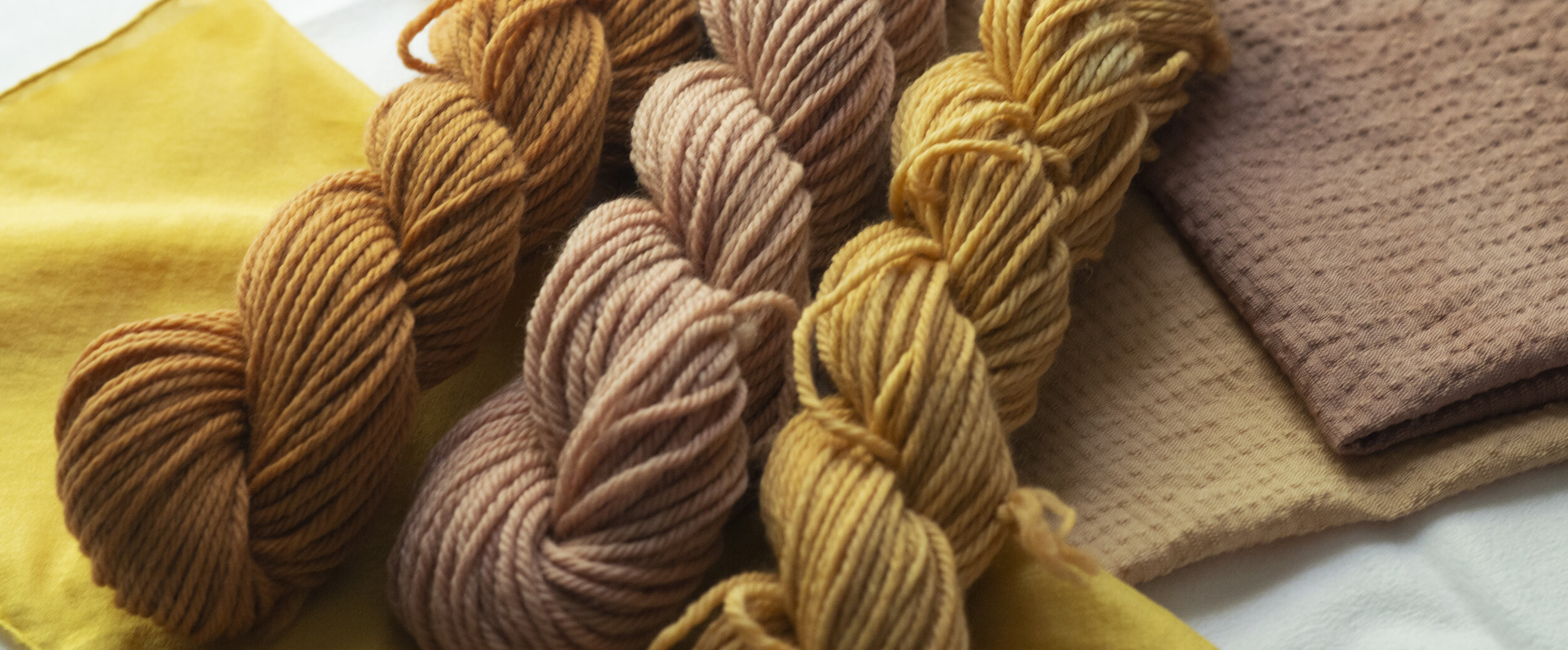
The Recipes
5. Recipe: Golden Yellow
The basic recipe for Himalayan Rhubarb Extract is to use 5% weight-of-fabric (WOF) on alum-mordanted fiber to produce a rich golden yellow at neutral PH. Himalayan Rhubarb gives particularly strong effects on wool, so you may want to reduce the concentration to 3% WOF to get lighter shades of yellow. Use unmordanted fiber for similar but more pale colors.
Fill your dye pot with warm water, making sure there is enough room for the fabric to move around and for water to circulate freely.
Weigh out 5% weight-of-fabric (WOF) Himalayan Rhubarb Extract into a disposable cup (multiply the dry weight of the fabric by 0.05 to get the correct amount of extract). You have two options for making the dyebath:
Add a little hot water to the cup and mix to form a thin slurry. Break up any clumps of powder, otherwise they may cause splotches on your fiber. Add this slurry directly to the dye pot. This is the fastest way to make a dyebath, but there will be insoluble bits of root that may get stuck in your fiber. If so it will be very hard to rinse the fiber, because those tiny particles of root will give off color for what seems like forever.
Put the Himalayan Rhubarb Extract into an empty tea bag, tie off, and add to the dyebath. Simmer for 2 hours at 180°F, stirring occasionally, to extract the color without getting any big particles of root in the dye bath. After two hours, allow to cool to room temperature. Remove the tea bag before adding fiber.
After the dye bath is ready, gently add your pre-mordanted, wetted fibers.
Raise the temperature to 180°F for protein fibers or 200°F for cotton. Maintain for 1 hour to 1.5 hours, stirring every 20 minutes or so to make sure everything dyes evenly.
After 1 hour to 1.5 hours, remove pot from heat and allow to cool to room temperature.
Remove the fibers and rinse briefly in lukewarm water to remove any particles of dye. You can either proceed immediately to rinsing with detergent, or hang the fabric up to dry first to help the color set. Make sure to hang it up somewhere where dripping dye will cause no damage.
For final rinsing, we recommend using a PH-neutral detergent like Synthrapol, since it is designed to wash out loose dye. Follow the manufacturer’s directions for best results. Be careful using commercial laundry detergents: most are extremely alkaline, and may shift the color of the fabric. CAUTION: Himalayan Rhubarb will bleed if not thoroughly rinsed out after dyeing.
Hang up to dry.
6. Recipe: Sandstone
The recipe for “Sandstone” involves an akaline modifier after following the recipe for “Golden Yellow.” We recommend doing this as an afterwash, rather than adding soda ash directly to the pot at the beginning of the process. In our experience, too much time in a high-alkaline dye bath tends to make colors look washed out. Better to do the dyeing at neutral PH and then do an alkaline color shift at the very end.
Follow the recipe for “Golden Yellow.” However, when the dyeing is finished, prepare a soda ash bath. There are two ways to do this:
Thin fabrics like silk habotai and cotton, or highly absorbent fibers like loose-spun yarn, can be shifted to red with just a quick dip in a soda ash solution. Add 1 tsp soda ash per gallon of water to a second dye pot; heat to 180F. Dip dyed fibers in this soda ash dip; they should shift to “Brick Red” in less than 30 seconds. If not, the solution may need another teaspoon of soda ash.
Thickly woven fabrics like wool canvas, or tightly spun yarns, may actually need to be simmered in an alkaline solution for 5-10 minutes to get a full color shift. In this case, keep the fibers in the original dye bath, add 2 tsp soda ash, and simmer for 5-10 minutes until color is shifted. Do not simmer too long, as the soda ash may start to make the color look washed out.
Hang the fiber up to dry. We recommend you do not rinse at this stage, because even rinsing in PH-neutral tap water can shift the color back toward yellow. Drying will help the color set.
For final rinsing, we recommend using a PH-neutral detergent like Synthrapold, since they are designed to wash out loose dye. Follow the manufacturer’s directions for best results. Be careful using anything with a neutral or acidic PH, as it may shift the color of the fabric.
Hang up to dry.
CAUTION: Natural dye colors that require extreme PH variations (alkaline washes or acidic baths) are unstable. “Sandstone” is a beautiful color, but any contact with acids or neutral liquids, including soft drinks, tap water, or human sweat, can shift the dyed fiber back toward a yellow shade. We do not recommend “Sandstone” for fibers that will see heavy use or get sweaty; for a more stable red, we recommend Wild Madder Extract instead.
7. Recipe: Ruddy Brown
With a copper mordant, Himalayan Rhubarb gives ruddier shades. On wool this produces a light-fast but unremarkable brown; however, on cotton, it gives a rich red-brown. Use a soda ash dip (described in Part 6) to shift copper-mordanted copper to a brick red or maroon.
Follow the recipe for “Golden Yellow” in Section 5, and then use a soda ash dip as described in Section 6. However, instead of using fiber mordanted with 12% alum, use fiber mordanted with 2% copper sulfate.
After shifting the color, hang up the fiber to dry. We recommend you do not rinse at this stage, because even rinsing in PH-neutral tap water can shift the color back toward yellow.
For final rinsing, we recommend using a PH-neutral detergent like Synthrapol, since they are designed to wash out loose dye. Follow the manufacturer’s directions for best results. Be careful using anything with a neutral or acidic PH, as it may shift the color of the fabric. CAUTION: Himalayan Rhubarb will bleed if not thoroughly rinsed out after dyeing.
Hang up to dry.
CAUTION: Copper powder (copper sulfate pentahydrate) is an irritant and may be harmful if ingested. Please read your vendor’s safety sheet (MSDS) before using. Wear gloves, a mask, and eye protection while handling the powder. Keep the powder, the mordant bath, and any mordanted but unrinsed fibers away from children and pets. Dispose of copper mordant baths according to local regulations. If you prefer not to use metal powders, it is possible to get a similar effect from a solution made from old pennies or copper wire—there are are guides available online.




